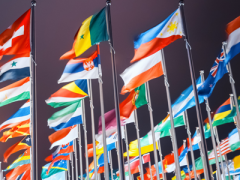Emission allowances and mitigation costs of China and India resulting from different effort-sharing approaches
To meet ambitious global climate targets, mitigation effort in China and India is necessary. This paper presents an analysis of the scientific literature on how effort-sharing approaches affect emission allowances and abatement costs of China and India. We find that reductions for both China and India differ greatly in time, across- and within approaches and between concentration stabilisation targets.
For China, allocated emission allowances in 2020 are substantially below baseline projections. Moreover, they may be below 2005 emission levels, particularly for low concentration targets (below 490 parts per million (ppm) CO2-eq). Effort-sharing approaches based on allocating reduction targets lead to relatively lower reductions for China than approaches that are based on allocating emission allowances. For 2050, emission allowances for China are 50–80 percent below 2005 levels for low concentration targets with minor differences between approaches. Still, mitigation costs of China (including emissions trading) remain mostly below global average. According to literature, Chinese emission allowances peak before 2025–2030 for low concentration targets.
India’s emission allowances show high increases compared to 2005 levels. If emission trading is allowed, financial revenues from selling credits might compensate mitigation costs in most approaches, even for low concentration targets. India’s emission allowances peak around 2030–2040 for all concentration targets.
Authors
Specifications
- Publication title
- Emission allowances and mitigation costs of China and India resulting from different effort-sharing approaches
- Publication date
- 10 April 2012
- Publication type
- Publication
- Magazine
- Energy Policy 46 116–134
- Product number
- 912




